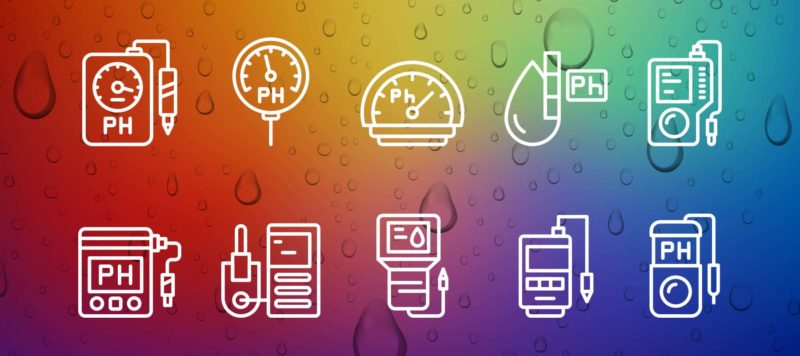No products in the basket.
PartnershipsProducts and SolutionsBest Types of pH Meters for Microbiology Labs
9 August 2022by verulam

pH is critical to life. In fact, for lifeforms living in liquids, such as the ocean, the pH of that liquid dictates what species can survive there. For example, scientists are concerned for ocean life, because rising CO2 levels from climate change actually decreases the pH of the ocean, making it too acidic for some species to live.pH is a liquid measurement parameter that drastically influences biological systems. pH ranges from 1-14, where liquids with a pH < 7 are considered acidic, liquids with pH = 7 are neutral, and liquids with pH > 7 are basic.
While these numbers might seem arbitrary, you might ask, what does a pH probe measure? pH between the relationship of hydrogen ions (H+) and hydroxide ions (OH-). Acidic solutions have more H+ than OH-, neutral solutions have equal concentrations of H+ and OH-, and basic solutions have less H+ than OH-.
Furthermore, many internal biological systems maintain tightly regulated pH, such as in blood. Microorganisms are interesting given their ubiquity and ability to tolerate vast pH ranges. It is important for scientists to understand why pH is important for microorganisms, which can influence the types of. Read on to learn more about the best types of pH meters used in a microbiology lab.
Why Is It Important to Monitor pH for Microorganisms?
Microorganisms constitute a broad group of lifeforms, where some strains are tolerant to wide pH ranges and others require narrow ranges. Generally, microbes prefer an optimal pH value, where changing the pH of the microbial environment reduces metabolism and viability.
The optimal pH value can dictate whether the microorganism is classified as an acidophile, neutrophile, or alkaliphile. Acidophiles are microbes that grow best at pH < 5, neutrophiles grow best at pH between 5 to 9, and alkaliphiles grow best at pH > 9. Generally, many microbial species are neutrophiles preferring a pH between 6.5 to 7.0. However, microbiologists working with acidophiles and alkaliphiles must ensure their culture conditions are optimized for their specific strains. Therefore, they must prepare all their media and reagents with proper pH levels when initiating cultures.
While beginning a culture with the correct pH is important, it is also critical to maintaining that pH in the culture. Some microbes internally produce acids that are released as waste into the environment. Over time, these acids accumulate and decrease the culture’s pH, thus reducing growth, metabolism, and viability. Therefore, it is ideal to routinely verify the pH of the culture, which can be efficiently done if using a pH meter in a microbiology lab.
How Can Microbiologists Monitor pH?
Many modern labs have a digital pH meter for laboratory use when collecting data and making solutions. So how would a digital pH meter in a microbiology lab work? In brief, a digital lab pH meter is an electronic device consisting of a probe and a visual display. The probe contains two electrodes: the reference electrode and sensor electrode that work in conjunction like a battery.
When the probe is placed in the solution, H+ ions displace the metal ions on the probe, creating an electric flow. The pH meter measures this electric flow and converts it into a corresponding pH value by comparing this generated voltage with that from the reference electrode.
Automated pH meters are more advanced than manual pH meters and can thus be an optimal pH meter in a microbiology lab for several reasons.
These include:
- reducing human error
- increasing consistency
- minimalizing hands-on time
- advancing safety
- being overall simpler to manage.
An auto pH meter is much more efficient than a human technician, where some models, such as the Rapid_pH, can quickly analyse 96 samples in less than two hours. Furthermore, additional features can be added to automated laboratory pH meters. For instance, some microbiologists will benefit from using a pH meter for viscous liquids or a pH meter that compensates for temperature.
Using a pH Meter in a Microbiology Lab
Automated pH meters quickly ensure proper microbial growth while scientists attend to more demanding tasks. These automated meters can measure the pH in 24-, 48-, and 96-well microplates and racks, which is an efficient way to upkeep cultures without excessively transferring between different culture vessels.
Cultures grown in 96-well plates, such as for treatment testing, transformations, and protein purification, can be readily moved between other instruments using 96 well plates, such as liquid handling dispensers.
To find out more ways to use a pH meter in microbiology labs, Contact Verulam Scientific Ltd – The UK distributor and service provider for Hudson Robotics. Speak to a member of our technical team at [email protected] or call 01234 381000.
#VerulamScientific #Automation #Innovation #SamplePreparation #LiquidHandling #CustomisedSolutions #SyntheticBiology #HudsonRobotics #AutomatedLaboratoryEquipment #LifeScienceResearch #DrugDiscovery #ClinicalResearch #PharmaceuticalDevelopment #Screening #Proteomics #Genomics




